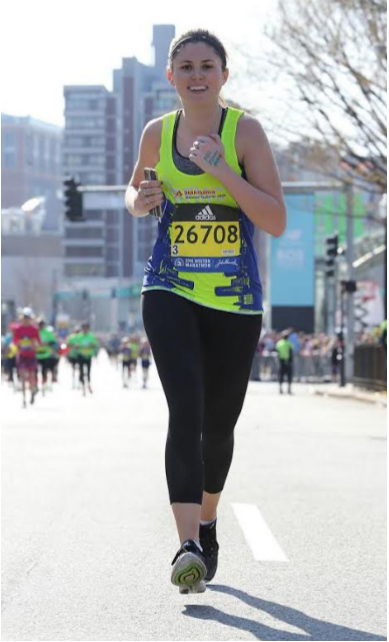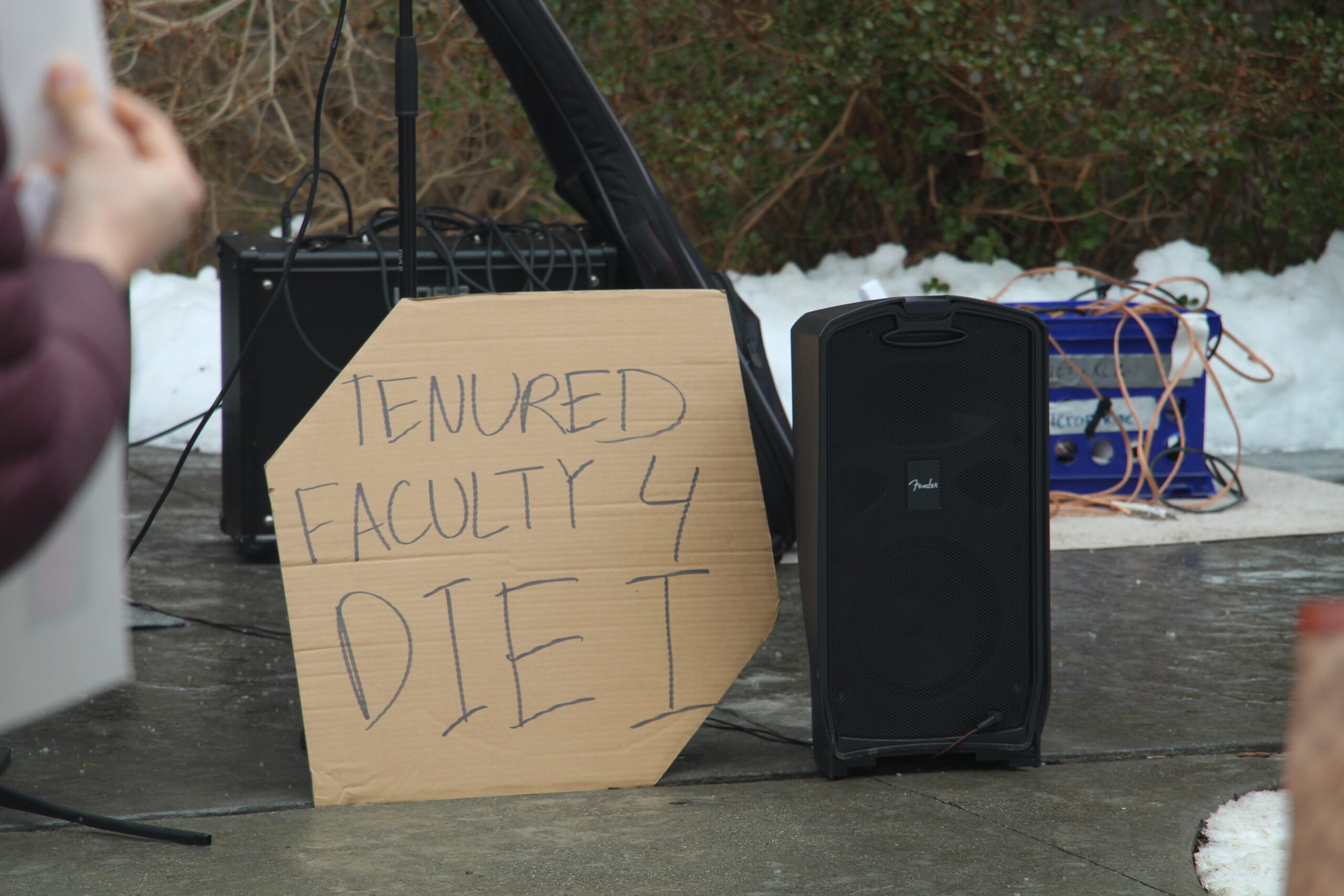26 miles, from Hopkinton Green to Copley Square. The Boston Marathon is the world’s oldest annual marathon and is one of the most famous. Tens of thousands of people run the marathon each year, some competitively, some for charity, and some for the challenge, and this year, Caroline Noonan ’16 was one of them.
The 2016 Boston Marathon was Noonan’s first marathon, and prior to this year she didn’t have much interest in running the distance. A Boston native, She ran in high school, typically five to six miles per run, but fell down to two to three while at Conn. This changed, however, when her best friend’s father was diagnosed with cancer. She said she started using running as a coping mechanism, especially as her friend’s father grew sicker, and the cancer spread from his throat to the rest of his body. He ultimately passed away in November of 2015, but not before Noonan considered running the Boston Marathon in his honor.
In September, Noonan applied to run with the Dana Farber team, where her friend’s father was being treated. The team accepted her application, and registered her for the marathon. With the logistics set in place, Noonan had the real challenge ahead of her: training to run 26 miles. From September to December, Noonan focused on running a half marathon, and in December worked to complete the final thirteen miles.
Using Hal Higdon’s Novice 1 Plan, Noonan was running, on average, four days a week, cross training once a week, strength exercising once a week, and taking one day off. Balancing training with school was hard, and some weeks she wasn’t able to keep up, but the training paid off, and she was on track with her plan. Noonan ran twomile loops around campus, laughing as she remembered days where she would run ten laps and see the same person watch her run as they left Harris, and then again as they left their class an hour later as she completed her run. Campus Safety even noticed her running and offered her rides places. “Training is such an unbelievable time commitment,” she said, adding that she didn’t truly know what she was getting herself into at the beginning of her training program.
Though one may assume that in the weeks leading up to the marathon a runner would have completed and been comfortable with running 26 miles, Noonan’s program had her only running 22 miles at the most before the race, a suggestion of her program for runners who are training quickly for marathons. In fact, in the days up to the marathon she was running even less than before, ensuring that she wouldn’t hurt her body too soon before the race.
The day of the Boston Marathon was beautiful: 70 degrees and sunny. Noonan had no problems during the first half of the marathon, she felt good and her only problem was telling herself to slow down as to not tire herself out for the second half. People line the entire length of the course, Noonan said, cheering you on constantly. Specifically for her, Noonan had friends and family (many coming from Conn to watch) waiting cheering her on at miles 16, 19, 21, 22, 25, and the finish line.

The hardest part of the race? The notorious Heartbreak Hill. Between miles 20 and 21, near Boston College, Heartbreak Hill combines its steep incline with its late timing in the race, and the fact that runners are already so exhausted by reaching it. Noonan said this was the only portion of the marathon that she walked.
After reaching the finish line, Noonan described how runners are immediately given water, medical attention if necessary, a foil blanket to keep warm (even on a warm day, after running so much your body temperature drops, and it’s crucial to stay warm), a banana and a bagel, and their welldeserved medal. The runners are instructed to walk another five blocks to prevent cramping before they’re allowed to leave with their friends and family.
In looking back on the 2013 Boston Marathon bombings, Noonan noted that it was “palpable” that people were on edge, and called the security “unbelievable.” All of the runners were checked multiple times with metal detectors before the start of the race. But there were moments of hope and pride for Boston, as well, such as when one survivor of the bombings who lost both of her legs finished the marathon using prosthetics.
As a member of the Dana Farber team, Noonan helped raise over $10,000 for the organization, with $400 of that coming from a spinning event she organized on campus in the fall. The Dana Farber team raised over five million dollars.
Though Noonan said running and training for the marathon was “absolutely worth it,” she said that preparing for the race took over her life, and she has been working to have a better balance now that the marathon has finished. Though she won’t be running the marathon next year, when she will be starting a new job in Boston after graduation, she does hope to one day run the marathon in Boston again, and perhaps in New York and London as well. •










